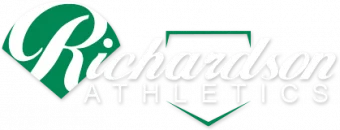Improve Player Performance and Safety with a Good Quality Pitcher’s Screen
Are you debating whether you should invest in a pitcher’s safety net? Most youth associations and schools consider it a necessity during practice. In fact, trainers today consider it a must-have both for baseball and softball. While keeping him safe from those hard-hit balls is the primary consideration, this protective L-screen is also great for assessing and improving their accuracy and strength. Let us examine the multiple benefits of using a pitcher’s screen.
Benefits of using protective nets
- Reduces risk of injury during fast pitch batting practice: With many coaches focusing on short toss drills, the risk of balls hitting back at an alarming speed and injuring the pitcher is greatly increased. Having this protective screen (many coaches will set it up anywhere from 20-30 feet from the batter) allows your pitcher to confidently pitch those fastballs, and take cover behind it. The batter hits them back without worrying about injuring his/her teammate.
- Improves practice quality: They absorb the velocity of the ball and keep your pitcher safe. Reducing the risk of injury allows your pitchers and batters to focus on form and technique. From front toss to flip drills, you can comfortably work with your team on refining hand-eye coordination and strokes for better quality practice sessions.
- Easy practice on the go: Easy-to-move-and-store pitching screens allow coaches to hold practice on any field, and also while their players are traveling. Many good quality ones come in a convenient carrying bag and can be set up in less than two minutes.
Tips for purchasing the right L-Screen
Great for beginners, collegiate-level, and professionals, a quality L-screen protects pitchers from irregular shots and hard-hit balls, providing coaches, parents, and players with peace of mind. Our sports specialists share the most important features to look for in a pitcher’s screen.
- Quality netting: The material should be able to withstand frequent use, weather exposure, rust, and high-velocity strikes. While nylon nets cost more than polyethylene, they also last longer. We recommend heavy duty #60 Nylon Netting for enhanced protection and durability.
- Rib/hip saver bar: It provides an extra area of protection to exposed ribs during player’s follow-through for added safety and net service life.
- Fast setup: If it takes longer than two minutes to install, it reduces your practice time.
- Easy to transport and store: It should come with a steel frame and wheels so to facilitate easy movement on and off the field. A zippered carrying bag would be ideal.
- Padding kit: Typically consisting of vinyl-covered padding and knees which absorb impact, this additional kit extends the life of your frame and net.
- Pitching pocket: If you use a pitching machine, look for a pitcher’s screen with a cutout. Pitching pocket screens go a step further than improving throwing skills around the strike zone by eliminating the need for a catcher.
Coaches at all levels consider the L-screen one of the most important pieces of equipment on the field. For professional results, purchase quality sports gear, training tools, and equipment from an established sports distributor like Richardson Athletics.

